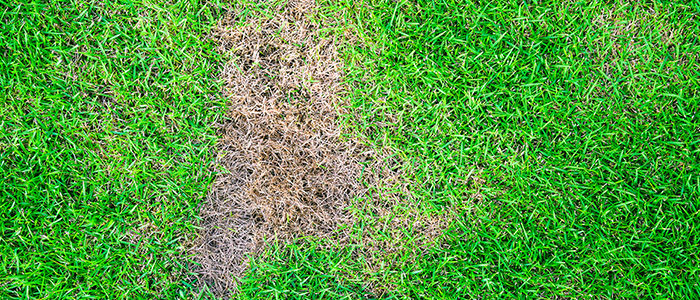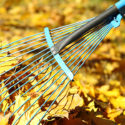Are patches of your lawn dying out? Do you find the leaves on your plants curling and dropping off prematurely? You may be dealing with a parasitic fungal disease.There are many forms of fungi, including mushrooms, mold, and mildew. Not all are harmful to plants, but some can take a toll on your lawn and garden. Most fungi thrive on soil or plant matter in moist, shaded areas.
Fungal disease is an especially big problem during prolonged periods of rain or high humidity. Without proper lawn and garden care, fungus can reappear and cause trouble year after year.
Here are solutions for dealing with the most common forms of lawn and garden fungi.
Common Garden Fungi
Fungus is often a sign of an environmental issue with your garden. Plants are more susceptible to disease when they aren’t getting enough water or nutrients, or lack the proper light conditions.
- Black spot causes round, black spots to appear on the upper surface of leaves. It usually occurs in late spring or early summer, when the humid weather hits. In serious cases, it can spread throughout the plant and leave it bare by mid-summer.
- Powdery mildew appears as a white, powdery substance on the surface of shoots and leaves. It affects fruit trees, bushes, grass, and annual and perennial flowers. If the mildew spreads, it can prevent the leaves from absorbing enough sunlight and damage the entire plant.
- Stem and root rot is caused by fungal pathogens that attack the stem of the plant at or below the soil line. When rot takes hold, the plant is prevented from moving water up to the leaves or down to the roots. Watch for gray, brown, black, or red spots along the bottom of the stem.
- Anthracnose begins with small, brown spots on leaves, flowers, fruits, or stems. The spots darken in colour as they spread and expand.
- Rust develops on the underside of the leaf and creates a yellow spot on the top side. The underside has red, orange, or black powder you can easily scrape off. The leaves become twisted and brittle, and eventually drop off.
Managing Garden Fungal Disease
You can effectively prevent most garden fungal diseases by ensuring your plants are well-fertilized and watered. In severe cases, it may be necessary to treat your plants with a fungicide, like Wilson Insecticide-Fungicide Garden Doctor or Green Earth Garden Fungicide. Be sure to choose a product designed for the type of plant you’re dealing with, and follow the suggested treatment regimen.
For shrubs and trees, you can help prevent fungal disease by spraying with Green Earth Dormant Spray in the early spring.
Common Lawn Fungi
Not all fungi are harmful to your lawn, and finding an occasional mushroom is nothing to worry about. The more serious fungal diseases usually appear as discoloured rings or patches. Left unchecked, these areas can spread, eventually damaging the entire lawn.
- Fairy rings are circular rings of grass that grow darker and thicker than the rest of the lawn, ranging from a few feet to several meters in diameter. They prevent the roots of the grass along the inner margin of the ring from getting enough water, causing it to yellow and die.
- Leaf spot becomes active during the cool spring weather. It first appears as small, yellow circles with dark borders on blades of grass. By late spring to early summer, the fungus enters its ‘melting-out’ phase, moving to the roots and crown of the grass and causing severe thinning of the lawn.
- Dollar spot causes large patches of grass to turn yellow in the early to late summer. Over time, the patches grow and overlap to create large areas of dead grass.
- Pythium appears as wet, slimy patches of grass that eventually fade to a light brown or yellow colour. On humid days, they develop a white, moldy growth reminiscent of cobwebs.
- Red thread becomes active in the later spring or early summer, when the humid weather begins. During periods of moisture, it creates red, thread-like strands on the tips of the grass. The blades have the appearance of bleached straw when they dry out.
Managing Lawn Fungal Disease
Once your lawn has a fungal disease, it can be very difficult to get rid of it. The best way to deal with lawn fungus is to provide proper lawn care and take steps to prevent the conditions for fungal growth. Fungi grows best in dark, damp areas, and it tends to take hold when the grass is already weak.
- Water in the morning so your lawn has time to dry before night fall.
- Only mow when the lawn is dry to avoid creating piles of damp grass.
- Let grass grow at least 6-8cm tall. Shorter grass is more susceptible to fungal disease.
- During a drought, water deeply and infrequently to keep your lawn healthy.
- Fertilize your lawn to ensure proper nutrition, but avoid adding too much nitrogen, as this can encourage leaf spot and dollar spot.
- Seed with a fungus-resistant grass in areas where fungus has caused problems before.
- Remove dead matter and animal waste from your lawn.



